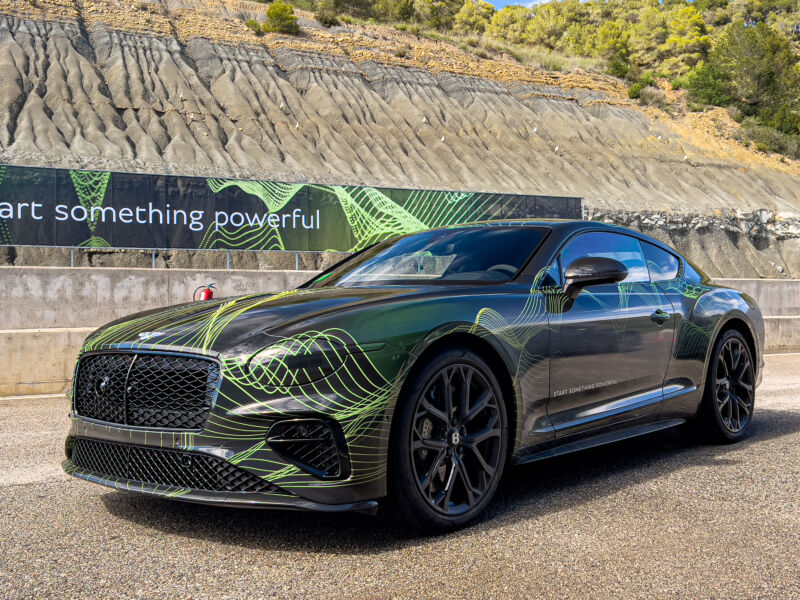Bentley is replacing its W12 engine with a plug-in hybrid—it let us try it

Enlarge / After building almost 100,000 W12-powered Bentley Continental GTs, the brand is moving to a plug-in powertrain. (credit: Jonathan Gitlin)
Bentley provided flights from Barcelona to Washington and accommodation so Ars could drive the Continental GT Speed. Ars does not accept paid editorial content.
BARCELONA—The days of big engines are numbered, even for big spenders. Owning a GT that lets you drive across Europe in a day in cosseted luxury means very little if you’re not allowed to drive it into the city you’re meant to be visiting, after all. Low emissions zones are either a fact of life or on the way in many of the more desirable urban post codes, and even here in the US we’re about to start getting quite tough on fuel efficiency. Which is why Bentley is saying goodbye to its W12-powered Continental GT Speed and replacing it with a new plug-in hybrid instead.
The W12 engine has become something of a trademark for Bentley in the 21st century. For many years, Bentleys were essentially just badge-engineered Rolls-Royces, while both companies were owned by the aircraft maker Vickers. But VW group took control of Bentley in 1998—BMW got Rolls-Royce—and it was time for something fresh.
Originally developed within parent company Volkswagen Group for use in the all-aluminum Audi A8, the W12 design essentially mated together a pair of narrow-angle V6 engines as used in the Golf VR6 to create a compact and powerful multi-cylinder engine for those customers looking for a powertrain a bit less common than a V8.




